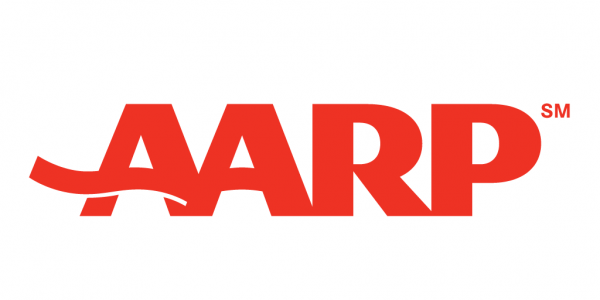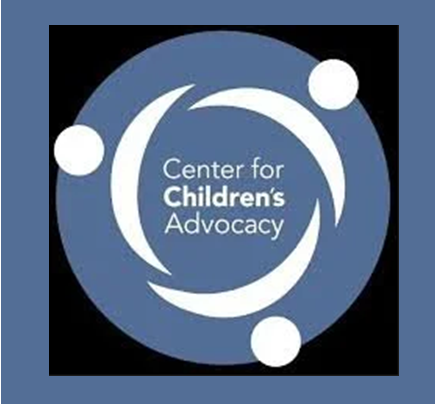The ZOOM Foundation Public Policy Fellowship is designed to develop a sustainable public service leadership pipeline in Connecticut by providing action learning opportunities and leadership development training that empowers emerging leaders to contribute meaningfully to Connecticut's public policy.
For Waterford native Katie Magboo, a 2005 Magna Cum Laude graduate of the University of Connecticut who taught elementary school in New York City and Westport for nine years, it was the perfect opportunity at precisely the right time.
“I enjoy policy development work, and I’m very invested in this state,” said Magboo, who concluded her year-long fellowship this month. Of her work with the state Board of Regents for Higher Education, “bridging the gaps” in the connections between K-12 education, college curriculum and workforce needs, she says “I’ve been privileged to have had the opportunity.” Recalling her work with the state’s Early College Steering Committee, she proudly recites the initiatives that she played a role in developing that have already begun to take root in the state – with more in the pipeline.
Established in Connecticut in 2001, ZOOM Foundation has sought to partner with “exceptional leaders who use a practical, entrepreneurial approach to innovation and change.” The Foundation is concerned with opportunities for impact at both a national scale as well as in Fairfield County. Primary areas of interest are education and the environment.
For the past year, five Fellows worked in the upper ranks of state and local government. Meg Hourigan in the Office of Governor Dannel Malloy, Karla Lindquist in the Department of Economic and Community Development, Jenna Lupi in the Mayor’s Office in Milford, Katie Magboo with the State Board of Regents for Higher Education and Katie Stenclik in the New Haven Mayor’s Office. Lupi, Lindquist and Magboo are Connecticut natives. ZOOM Foundation awarded two fellowships in 2012 and six in 2013.
The Fellowship supports “select emerging leaders to increase their impact through the opportunity to work on high-level policy projects in Connecticut and participation in an intensive professional development and network building program,” the organization’s website points out.
The selection criteria include: intellectual curiosity coupled with a learning stance, entrepreneurial spirit, resourcefulness, emotional intelligence and commitment to public service. Eligibility requirements include a bachelor’s degree, at least two years of post-grad work experience, relevant leadership experience, and a desire to continue on a path of leadership.
The Fellows “work on a variety of high-level policy projects to develop the insights and strengthen the skills necessary to lead change for the public good,” bringing “a sense of urgency, an action orientation, and a dogged optimism that meaningful social change can be achieved.” The government agencies or municipalities where the Fellows are placed choose the specific assignment and area of focus for their work.
Among the programs that Magboo helped to develop is one now underway in Norwalk. Norwalk Early College Academy is based on the Pathways in Technology Early College High School (P-TECH) model, which combines the best of high school, college and the professional world.
NECA is a high school plus two years, grades 9 to 14. Within this six-year timeframe, students earn not only a high school diploma, but also an Associate in Applied Science degree, from Norwalk Community College. Graduates will have the skills and experience to step into well-paying jobs in the Information Technology (IT) industry, the program’s website explains.
Similar initiatives are being developed in western Connecticut and eastern Connecticut, connecting local high schools, community colleges and local employers. In the Danbury area, a relatively recent business in the region is serving as a partner in the initiative, to begin next year. In eastern Connecticut, major employer Electric Boat, a division of General Dynamics, is set to be the workforce partner when that initiative gets underway.
The Foundation notes that “Connecticut has the greatest educational achievement gap in the country and the Foundation has invested in organizations and programs that will cause significant, lasting change and which generate momentum to close the gap.”
Magboo said the fellowship provided an opportunity to “make an impact at more of a macro level, and be a part of positive change.” Her efforts included research, on the ground application, and program development, working alongside individuals from academic and industry. “It has been an incredible opportunity.”
Applications from across the nation for the Connecticut-based ZOOM Public Policy Fellowship for 2015-16 were submitted in February, with the newly selected Fellows to begin their work later this summer. ZOOM Fellows receive a salary from the Foundation, as well as medical and other benefits, and most spend a full year working within a government organization or agency. Based in Fairfield, the independent family foundation is led by Stephen and Susan Mandel.


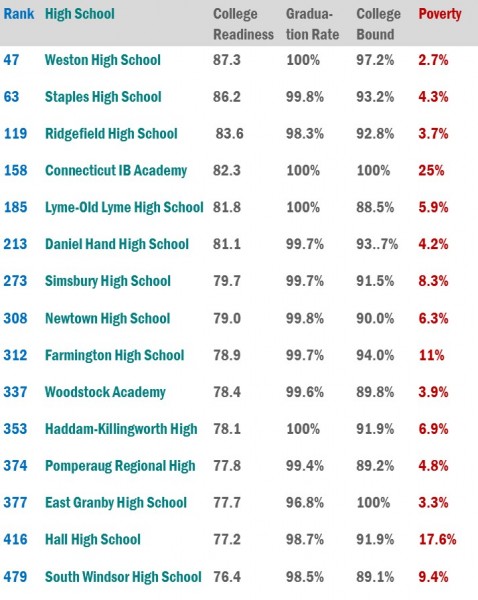





 The most recent fee data available from 2-1-1 Child Care estimates the statewide average cost of full-time child care in a licensed center-based day care setting is $211/week for 1 preschooler and $253/week for an infant, which adds up to $2,011 per month. This may be less than what many Connecticut families pay for child care each month, due to variations in cost and availability throughout the state, differences in family size, and other costs associated with child care that are not included—such as the cost of alternate care arrangements when the child care setting is closed
The most recent fee data available from 2-1-1 Child Care estimates the statewide average cost of full-time child care in a licensed center-based day care setting is $211/week for 1 preschooler and $253/week for an infant, which adds up to $2,011 per month. This may be less than what many Connecticut families pay for child care each month, due to variations in cost and availability throughout the state, differences in family size, and other costs associated with child care that are not included—such as the cost of alternate care arrangements when the child care setting is closed


 The Center’s study found that over the past year, as states have started to restore funding for public higher education, tuition hikes have been much smaller than in recent years. Just seven states -- Louisiana, Colorado, Connecticut, Hawaii, Kansas, Virginia, and Mississippi -- raised tuition by more than $300, after inflation.
The Center’s study found that over the past year, as states have started to restore funding for public higher education, tuition hikes have been much smaller than in recent years. Just seven states -- Louisiana, Colorado, Connecticut, Hawaii, Kansas, Virginia, and Mississippi -- raised tuition by more than $300, after inflation.







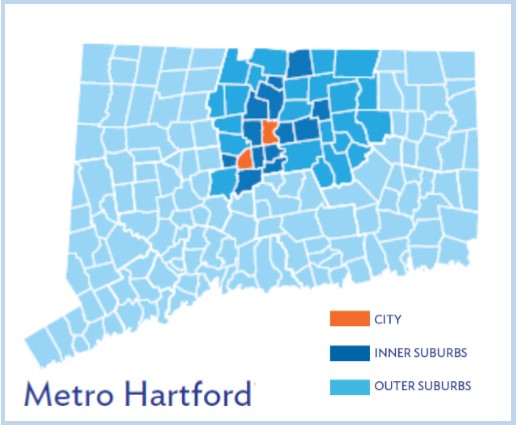
 Looking at five year trends, the report found that the region’s population of about 1 million people has grown by 2 percent, which translates to about 20,000 people or about 4,000 families. Regional job growth, 3.5 percent, is on par with the state, but remains about 8,000 jobs below pre-recession levels. The crime rate across the Greater Hartford region has been reduced by about 18 percent during the past five years, faster than the state (-16%) and national (11%) trends.
Looking at five year trends, the report found that the region’s population of about 1 million people has grown by 2 percent, which translates to about 20,000 people or about 4,000 families. Regional job growth, 3.5 percent, is on par with the state, but remains about 8,000 jobs below pre-recession levels. The crime rate across the Greater Hartford region has been reduced by about 18 percent during the past five years, faster than the state (-16%) and national (11%) trends.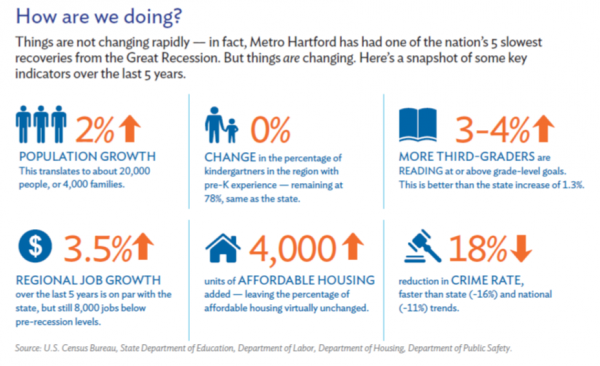
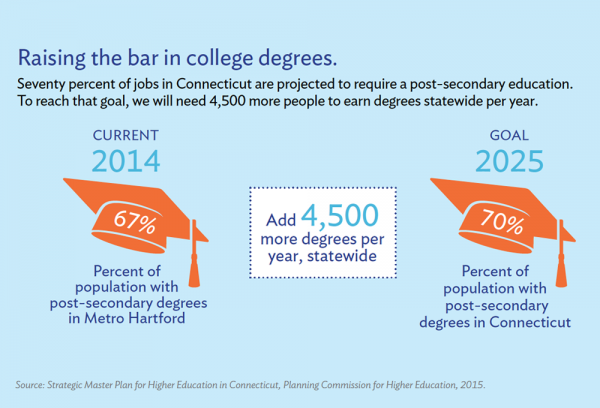 Partner organizations in developing the report include the Hartford Foundation for Public Giving, Capital Workforce Partners, Capital region Council of Governments, Metro Hartford Alliance, Hispanic Health Council, United Way of Central and Northern Connecticut, Urban League of Greater Hartford, Center for Urban and Global Studies at Trinity College, and the City of Hartford.
Partner organizations in developing the report include the Hartford Foundation for Public Giving, Capital Workforce Partners, Capital region Council of Governments, Metro Hartford Alliance, Hispanic Health Council, United Way of Central and Northern Connecticut, Urban League of Greater Hartford, Center for Urban and Global Studies at Trinity College, and the City of Hartford.



